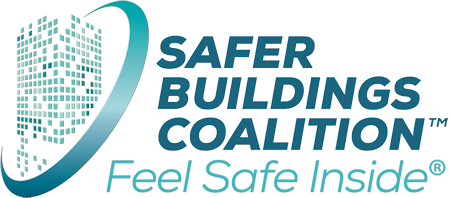A Message From the President: Let's Talk About Our Mission
Posted on November 22, 2019 Greetings, Safer Buildings Coalition members. In this, my first President's Message, I would like to talk about the Safer Buildings Coalition's mission. You see, our mission has evolved. Some of you may still think of SBC primarily as a first responders' advocate. We very much remain a first responders' advocate, but today, the Safer Buildings Coalition's mission, messaging and activities are much broader than that. As our new tag line "Feel Safe Inside" evokes: This is about public safety – We are dedicated to making everyone feel safe inside.
On our website, we define SBC and its mission thus:
From our inception before the FCC in February 2012, the Safer Buildings Coalition has been at the forefront advancing the idea that wireless technology makes people inside large buildings safer.
When the public can use their mobile phones to call for help, be notified when there is an emergency, and know that emergency personnel can communicate inside the building where the emergency is taking place, we will have fulfilled our mission.
The Safer Buildings Coalition is an independent, non-profit organization focused on advancing policies, ideas and technologies that ensure comprehensive in-building communications capabilities for public safety personnel and the people they serve.
None of this has changed, but we recently boiled our core message/mission down to three fundamental points – our 3 Pillars of In-Building Public Safety Communications:
What does this mean, exactly? We can expand a bit on each point.
Of these three pillars, you could say that 2.5 are addressing communications in licensed frequency bands, and the applications are not limited to First Responders.
The FCC estimates that 70% of 911 calls are placed by using wireless devices such as smart phones. We also know that approximately 80% of the phone calls by smart phones are made inside buildings. In other words: More than half of all 911 calls are placed by smart phones inside buildings.
That is one of the main reasons why, when we talk about safer buildings, we address not only the needs of First Responders, but also focus on the needs of the general public and its ability to call for help and receive (emergency) communications on their mobile devices.
With that in mind, here’s my key message to you:
As Public Safety Cellular (such as FirstNet and the important public safety offerings of all wireless carriers) becomes more pervasive, our members should address solutions that can accommodate both traditional LMR frequency bands and commercial frequency bands to ensure the needs of public and public’s safety.
We are also calling on traditional commercial cellular community to join our cause to advance our mission together.
When we all work together to further these objectives, we will continue to move closer to a world where everyone can indeed "Feel Safe Inside."
Thank you for your attention.
Patrick Lau |

